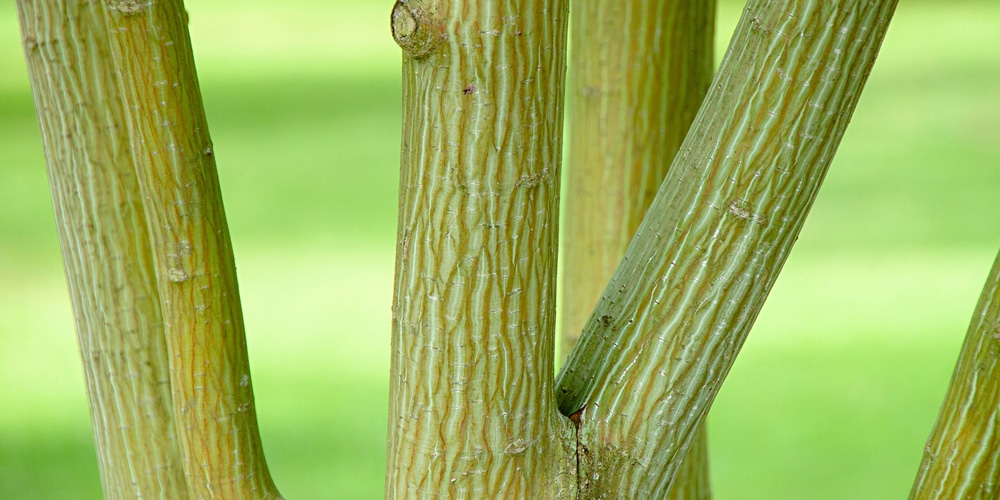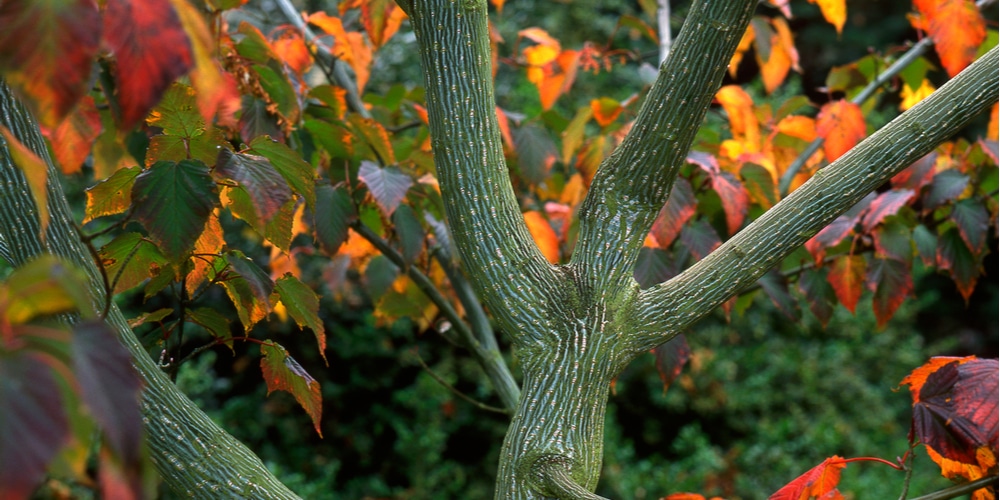Acer Capillipes or Snake Bark Maple is a stunning plant, perfect if you need to add some shade to your outdoor space. This tree isn’t particularly challenging to grow. However, if you want it to thrive in your garden, you’ll have to meet its needs and requirements. Keep reading to find out all you need to know about snake bark maple to make the most out of your plant!
| Botanical Name | Acer capillipes |
| Common Name | Snake Bark Maple |
| Plant Type | Perennial |
| Flower Color | The plant produces tiny yellow flowers that grow in pendants during the spring. |
| Size When Mature | Up to 30 ft tall |
| Bloom Time | Spring |
| Sun Requirements | Full to Partial Shade |
| USDA Hardiness Zones | 5-7 |
| Soil PH Range | 4.0 to 7.5 |
| Soil Type | Well-draining, moist, and fertile |
| Water Needs | Medium |
| Native Area | Asia |
What you Need to Know About Acer capillipes
Acer Capillipes, more commonly knowns as Snake Bark Maple, is a native Asian tree that only grows about 30 feet tall. If you have limited space in your garden, you might benefit from the addition of this medium-sized plant.
Indeed, with adequate care, this plant can be a stunning addition to any space: it produces abundant foliage, which turns yellow and orange in the fall, adding beauty all year round. One of the most striking characteristics of this plant is its snake-like bright green with silver stripes bark (hence the name).
Snake Bark Maple is a low-maintenance tree: once established, it doesn’t require much attention from your side. Additionally, it isn’t toxic to animals or humans, making it a safe choice if you have kids or pets.
How to Care for Acer capillipes
As we mentioned before, taking care of Snake Bark Maple is not a challenging task. Still, if you know what it needs, you’ll be able to enjoy a healthier plant. Keep reading to learn everything you need to know about growing thriving Acer capillipes.
Light
Acer capillipes will adapt to both full and partial sunlight conditions. Inadequate lighting might halt its growth. Similarly, too much sunshine might harm your plant. If you live in a warm region, consider protecting your tree from the harsh rays of the afternoon sun.
Water and Soil Needs
Snake Bark Acacia isn’t fussy about soil conditions. Indeed, it will adapt to most environments. It will thrive in acidic to slightly alkaline pHs, so don’t worry about soil tests.
However, this plant will perform much better in well-draining soils. Consider making the necessary amendments to improve drainage. Indeed, the tree loves constant moisture but cannot stand wet feet.
Adequate drainage will prevent the appearance of fungal infections and other diseases that might affect your plant due to overwatering.
Temperature Requirements
This plant thrives in mild temperatures. It does pest in regions where summers are not too extreme. So, it is an ideal plant to grow in USDA hardiness zones from 5 to 7. Keep in mind that this plant won’t do well in humidity and hot environments. If you live in a southern state, consider planting a different species.
Fertilizer
Fertilizer can help boost growth and might contribute to making your plant healthier. However, adapt your tree’s feeding to its requirements. For instance, you should add a product high in phosphorous to your young trees to encourage root development. Established plants will do best with balanced fertilizers, which will provide them with all the nutrients they need to stay healthy.
Common Diseases
Overwatering is one of the most common issues with this plant. Indeed, too much moisture can attract pests and fungal infections. To prevent that, ensure you plant your tree in well-draining soil. Also, don’t forget to allow the soil to dry in between waterings.
Additionally, aphids might be an issue too. Keep an eye on your plant to take prompt action as soon as you notice something wrong with it. Ensure you take adequate measures to eliminate any pests from attacking your plants. If the infestation isn’t severe, you might be able to remove aphids by spraying them with water and hand-picking their bodies. Alternatively, consider purchasing a suitable pesticide.
Acer capillipes Propagation
You can propagate your tree by seeds or cuttings. However, you’ll have much higher chances of succeeding by taking a couple of 3 to 6 inches long cuttings. Plant them in well-draining and fertile soil. Keep your cuttings well-watered. With proper care, you should be able to get some germination within a couple of weeks.
Related Article: Will My Japanese Maple Come Back After Frost?


